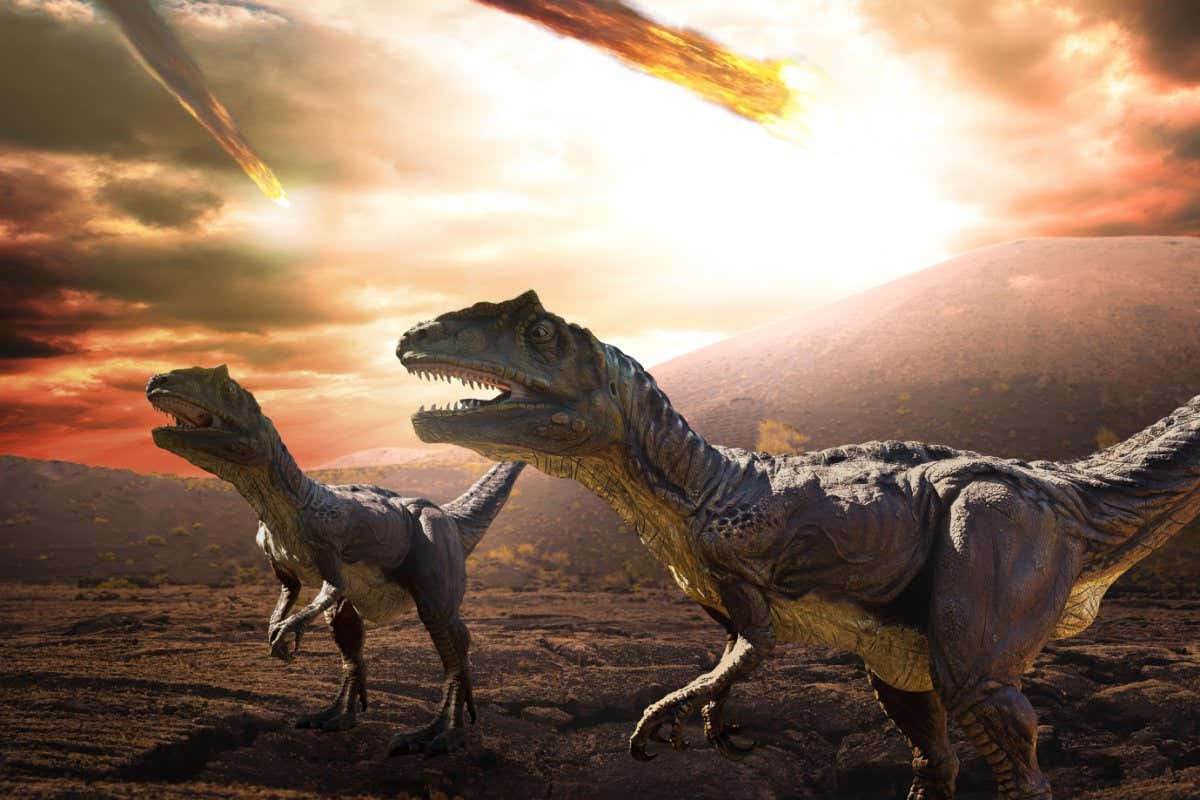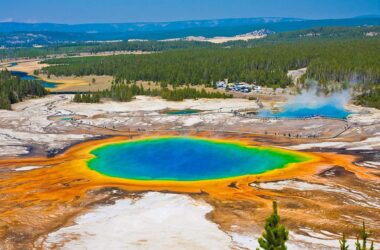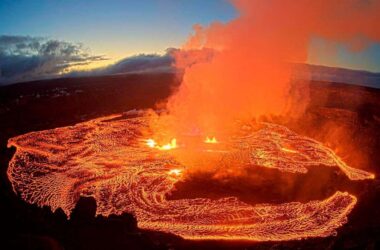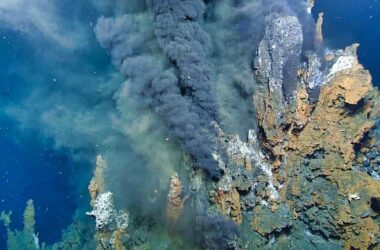A recent discovery suggests that there may have been a second asteroid impact during the extinction event that wiped out the dinosaurs. A 9-kilometer-wide crater has been found buried beneath the sea floor near West Africa, believed to have been caused by a chunk breaking off the larger Chicxulub asteroid that is commonly associated with the mass extinction.
The feature was identified by Uisdean Nicholson, a researcher at Heriot-Watt University in Edinburgh, UK, using seismic reflection data from the oil and gas industry. Named the Nadir crater, it is located on the continental shelf off the coast of Guinea and is buried beneath 300 meters of sediment in an area with a water depth of 900 meters.
The structure of the Nadir crater shares characteristics with impact craters, including a raised rim and signs of ejected material. Veronica Bray, a researcher at the University of Arizona, suggests that it was formed by the impact of an asteroid about 400 meters in diameter.
The Nadir crater is estimated to have formed around the same time as the Chicxulub crater, approximately 66 million years ago. This has led the research team to propose the idea that it was created by a piece that broke off the Chicxulub asteroid, which was about 13 kilometers in diameter.
Rather than the two craters being very close if the breakage occurred just before impact, Nicholson suggests that gravity may have broken the asteroid apart during an earlier orbit, resulting in two impacts within a few days of each other. This phenomenon is similar to what happened with the Shoemaker-Levy comet that broke into fragments and struck Jupiter over a span of six days.
Nicholson also speculates that the Chicxulub asteroid may have fragmented into multiple pieces, which could mean that there are more impact craters yet to be discovered or that some may have been destroyed by tectonic processes. However, it is important to note that craters do not form when asteroids hit water several kilometers deep, as most of our oceans are.
Gareth Collins, a researcher at Imperial College London, agrees that the Nadir crater shares features consistent with an impact structure but expresses uncertainty about its connection to the Chicxulub impact. Further dating and more precise analysis are needed to confirm the correlation between the two events.
Nicholson’s team has submitted a proposal to drill through the Nadir crater to retrieve cores that will help determine if it is indeed an impact structure and provide a more accurate date for the event.
While the Nadir impact alone would not have caused a global extinction, it would have had significant regional effects, such as creating tsunami waves up to 500 meters high near the impact site. Additionally, the impact could have triggered some global warming by releasing carbon from the black shale rocks it struck and destabilizing methane hydrates on the sea floor.
The Chicxulub impact, on the other hand, was approximately 1000 times more powerful and resulted in the extinction of all non-avian dinosaurs, marking the end of the Cretaceous Period. Fossils of animals killed by this impact have been found in North Dakota.








